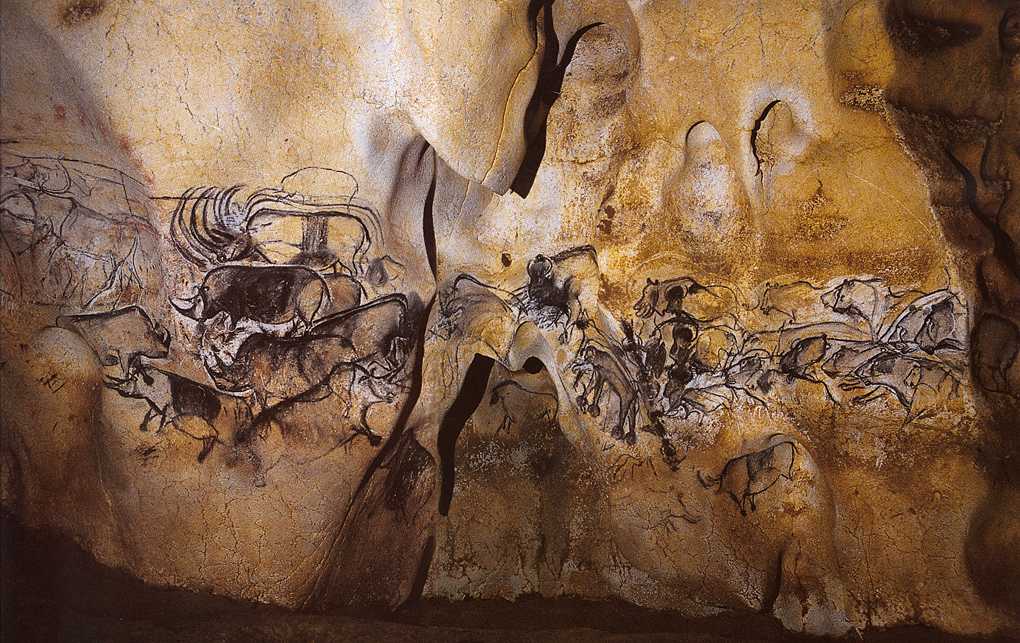By Chlotrudis Independent Film Society
Rating: 4.25 cats
Director: Werner Herzog

Country: canada, germany, united_kingdom, united_states
Year: 2011
Running time: 90
IMDB: http://www.imdb.com/title/tt1664894/
Jason says: “Pundits declaiming the use of 3D in recent years often act like it was gone for a generation between the mid-eighties and late-naughts, but that’s not really the case; it was used extensively for documentaries that played at science museums and the like. With few exceptions, those tended to be the work of relatively anonymous filmmakers, the subject more
important than authorial voice. That’s the case here, to an extent; even a personality like Werner Herzog eventually steps aside to simply marvel at the Chauvet cave paintings.
“The Chauvet cave system was discovered by a trio of explorers on 18 December 1994, and while it would have been a remarkable discovery regardless, the contents are the reason why the government of France strictly limits access: There are paintings in the cave estimated to be thirty-two thousand years old, by far the oldest ever discovered. They are a tremendous resource to anthropologists, archeologists, and even zoologists – before seeing these paintings, they could only guess as to whether the extinct cave lion had a mane like present-day African lions – but even beyond the macro level, these paintings touch
something in the romantic souls of the researchers; there’s a connection between them and an artist who lived millennia ago.
“The paintings themselves are interesting, but Herzog and company do an impressive job of placing them in context. An image on the wall of a horse with eight legs will lead to discussions of how even at this incredibly early stage, the artists were already using distortions and other techniques beyond simple representation to illustrate movement, power, and emotion; the sole human figure leads to sculptures with similar designs found at a German site not far away. We see what a fine, technologically sophisticated process archeology has become; work with a shovel would likely destroy the small, fragile artifacts in question, and a laser-generated map allows researchers to explore the cave without opening it up to potential contamination.
“What the film shows the audience certainly establishes the paintings as worth preserving. Herzog and company shoot the cave in two stages – first, accompanying a team of scientists with a somewhat makeshift camera rig, later on their own for a five-day shoot capped at four hours a day. The shots from the first trip are impressive and informative, with various scientists pointing out and explaining different things, but the later shots are the most beautiful. Herzog, cinematographer Peter Zeitlinger, and editors Joe Bini and Maya Hawke give us time to ponder the images we see, often without narration – it’s up to us to resolve that image into a horse or rhinoceros, and imagine the scene that brought it there. The limited LED lights play over the paintings in a way that evokes torchlight, but doesn’t flicker in imitation of it.
“Stereoscopic presentation may not be strictly necessary for this feature, but it does enhance the experience. Stalactites and
stalagmites in the foreground make for beautifully framed shots, but it’s on some of the close-up examination that the third dimension comes in particularly handy; though painting is an inherently two-dimensional medium, these are done on uneven surfaces, and that’s an important part of examining them. The curvature and angularity of the cave walls is highlighted, almost exaggerated; I suspect that seeing the film in two dimensions would flatten and diminish this effect.
“Though the end of the film, where we simply look at the paintings, is presented mostly without narration (other than a comment about how they shot something earlier described as unviewable), Werner Herzog does make his presence known elsewhere: The first amazing shot of the cave’s interior has him deadpanning that the cave was initially thought unremarkable… except, of course, for its great beauty. It almost seems inevitable that he will find the scientist who had once been a circus performer in his interviews, and that his eccentric form of curiosity will take some of those interviews in odd directions. At times, he and his interviewees will seem to strive too hard to assign a metaphysical significance to the caves and their work, as if looking for a complex profundity when the simple one is just as good.
“After all, this film doesn’t need to add more to its raw materials: The paintings are amazing and thought-provoking on their own. Given their extreme fragility, most people will never be allowed to see these ancient artworks in person, and this presentation is the next best thing. 4+ cats
“Seen 7 May 2011 in AMC Boston Common #1 (first run, Real-D 3D)”
